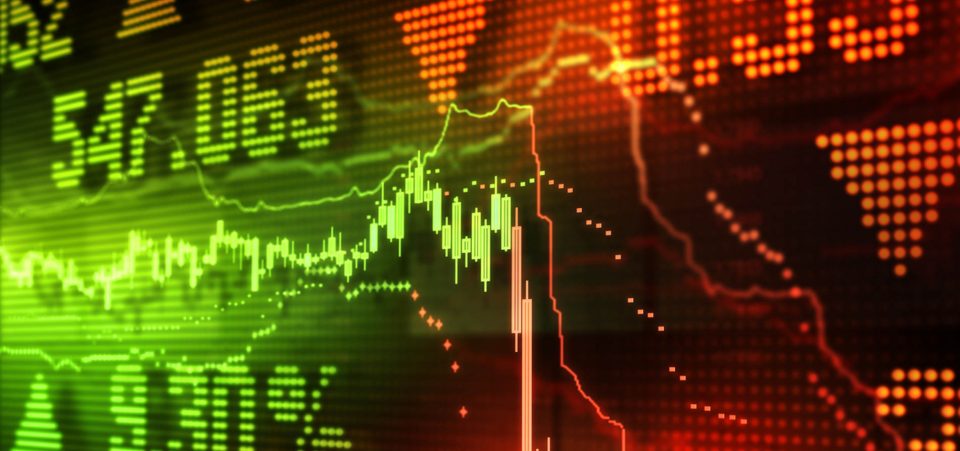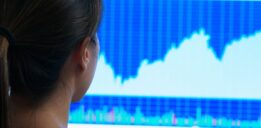Here’s Why a Stock Market Crash Could Occur in 2017
A stock market crash in 2017 could become reality. If investors have bought the optimistic mainstream rhetoric, they could be setting their portfolios up for big losses. Key stock indices like the S&P 500 could drop 24% or more.
Why could there be a broad market sell-off? There is a significant number of indicators flashing warnings signs that suggest a stock market crash could happen sooner than later.
A few factors that investors need to pay attention to are: investor/Wall Street sentiment, political uncertainty, the actions taken by the Federal Reserve and their consequences, and the U.S. economic situation.
Optimism Soaring Like It’s 2007 Again
It can’t be stressed enough; whenever Wall Street or investors in general become optimistic, it is time to step back and reflect on what is happening. If you listen to the advice of successful investors, they have commented on it rigorously—severe optimism and euphoria are key indicators of a stock market crash.
With this said, please look at the chart below. It’s a result of a weekly survey of key players on Wall Street—traders and analysts.
Chart courtesy of StockCharts.com
Currently, 65% of Wall Street traders and analysts are bullish on the stock market. The last time this figure was this high was in 2012. Prior to this, it was in 2007, just a few months before the stock market crash of 2008. Investors beware!
But this is just one thing.
Investors are convinced that a stock market crash isn’t a possibility. Their actions are speaking louder than their words. Look at the chart below. It shows assets in funds that bet against the stock market.
Chart courtesy of StockCharts.com
Since the stock market crash of 2008–2009, these funds have seen their assets diminish immensely. Again, this suggests investors are not too concerned about losses on the stock market.
If this wasn’t enough to convince you about how optimistic investors really are, and how they could be losing touch with reality, look at the margin debt. It is skyrocketing.
You see, margin debt is essentially how much money investors have borrowed to buy stocks. If they are borrowing to buy stocks, it suggests they are severely optimistic. They are taking on leverage and could be greedy for much higher returns.
In February, margin debt on the New York Stock Exchange (NYSE) reached $528.0 billion. This was the highest amount ever. But know this: prior to the previous stock market crash, margin debt was hitting all-time highs as well.
Political Uncertainty
Know that markets hate political uncertainty. Sadly, as it stands, it looks like we have an abundance of it.
After President Donald Trump was elected in November 2016, investors rushed toward stocks, thinking that corporate taxes would go lower, earnings would improve, and there would be some infrastructure spending. Unfortunately, not much has been done on that front yet. It’s all talk for now. There’s no actual plan in place.
Think of it this way: what would happen if, all of a sudden, President Trump issues a statement saying corporate tax rates will not change and what he promised during his campaign can’t be done? Investors could panic on this and sell stocks.
Furthermore, a lot of confidence is being lost in the government. Could the new U.S. administration do what it promised? One of the biggest setbacks was being unable to repeal Obamacare.
On top of this, the geopolitical situation isn’t very stable either. North Korea, Syria, and Afghanistan have been in the news for the past several weeks, and investors are asking if this could lead to a negative outcome.
Keep in mind, just one statement from the U.S. government can throw investors off. They could run for the exits, and this would result in losses.
Disparity in Monetary Policy—Federal Reserve vs. Rest of the World
Disparity in monetary policies around the world could cause investors to sell as well.
As it stands, the Federal Reserve is in the midst of raising interest rates. Since December 2015, the central bank has increased rates three times, and it is expected to raise them further.
This is what investors have to question: the Federal Reserve has a lot of influence across the globe, and is the only major central bank talking about higher rates.
Other major central banks are in the midst of lowering their rates and printing money. Look at the European Central Bank (ECB), for example. It’s currently implementing a negative interest rate policy (NIRP), and printing money without any end in sight just yet.
The Bank of Japan, among others, is doing something similar to the ECB as well.
Understand that this disparity could create a lot of volatility in the currencies and bond markets across the globe. And, it would force many investors to re-adjust their portfolios. As result, we could see a sell-off in the stock markets. Mark these words: don’t take the disparity in monetary policy lightly.
Disappointing U.S. Economic Performance
Lastly, know that economic performance and stock markets go hand-in-hand. If an economy is showing dismal performance, a stock market crash follows. We could see this in 2017.
If investors are looking at the key stock indices, and have taken them as an indicator of the U.S. economy, they could be making a huge mistake. The U.S. economic conditions aren’t as great as the key stock indices show.
In March, the U.S. labor market faced headwinds. According to the Bureau of Labor Statistics, only 98,000 jobs were added to the U.S. economy for the month. This was one of the lowest number in a while. (Source: “Employment Situation Summary,” Bureau of Labor Statistics, April 7, 2017.)
Consider this: in January, the U.S. economy added 216,000 jobs and it added 219,000 jobs in February. It must be questioned why, all of a sudden, the monthly number of jobs added to the U.S. economy dropped.
Unfortunately, disappointing data isn’t in the U.S. labor market only. Pay attention to the consumption figures as well.
Better yet, see the chart below. It shows year-over-year change in monthly consumption figures when adjusted for inflation. Before you look at the chart, keep in mind that consumption makes up roughly 70% of the U.S. gross domestic product (GDP). If it declines a little, the U.S. economic growth rate hurts.
(Source: “Real Personal Consumption Expenditures,” Federal Reserve Bank of St. Louis, last accessed April 26, 2017.)
Since early 2015, consumption in the U.S. economy has been decelerating. In early 2016, it started to move higher but, later in the year, it started to decline again. Over the past few months, it has been dropping much faster.
Saying the very least, this is bad news. It could be a leading indicator of an economic slowdown in the U.S. economy and, ultimately, a reason why a stock market crash could happen in 2017.
How Low Could Key Stock Indices Go if a Stock Market Crash Happens in 2017?
Dear reader, it’s critical to understand what happens during a stock market crash. The last thing an investor could do is give away the gains by not knowing.
If there’s a sell-off, key stock indices first tend to sell off to the nearest support level. With this said, please look at the chart below of the S&P 500, and pay close attention to the black lines drawn on it.
Chart courtesy of StockCharts.com
For the S&P 500, the first major support level from where it currently stands is around 2,150—or roughly 10% lower.
But, also know that if investor panic increases, an even bigger support level on the S&P 500 is around 1,813—or 24% lower.
Now, you have to factor in investor psychology for this, too.
Based on past stock market crashes, if there’s one thing investors should learn, it’s that, when there’s panic in the market—and the losses remain persistent—investors sell everything and anything in sight. So, all of a sudden, you see losses get huge. This is what we saw during the stock market crash of 2008-2009. Selling didn’t stop until the Federal Reserve and the U.S. government stepped in to help troubled banks.
Three Things to Do if Key Stock Indices Tumble
Here’s the thing: the worst thing that investors could do during a stock market crash is panic and follow what everyone is doing. Novice investors could do the following three things.
First, they have to asses their holdings very closely. During a stock market crash, even the best companies get sold. If investors hold companies that are strong, maybe they could consider adding more to their portfolio at lower prices.
Second, look for opportunities. Again, great companies get sold for no reason in a broad market sell-off. So, investors could really go out on a shopping spree and acquire companies at discounted prices.
Also know that, thanks to financial innovations, there are investment products that could help investors make money during a stock market crash. For example, look at ProShares Short S&P500 (ETF)(NYSEARCA:SH). This exchange-traded fund (ETF) follows the S&P 500. If the S&P 500 drops by one percent, this ETF increases by one percent.
Keep in mind, this is not a recommendation to buy. It’s just an example of what kind of opportunities there are for investors.
Third, cut losses that are getting too big. This has been mentioned in these pages before: if a position has dropped 50% in value, it would have to increase 100% for investors to just break even. And 100% moves don’t happen very often.










